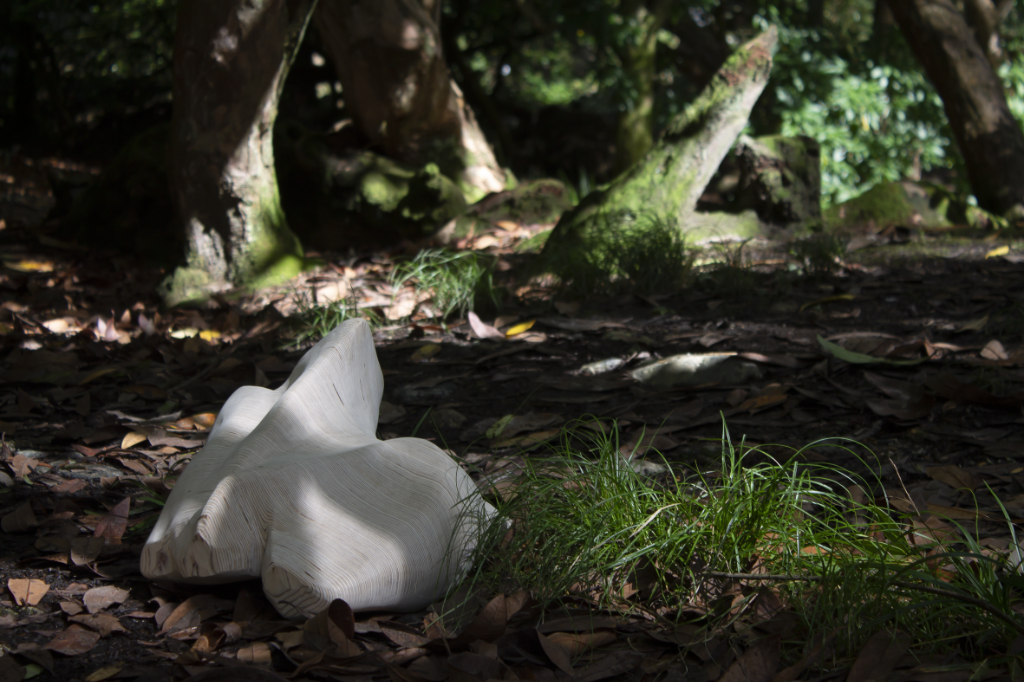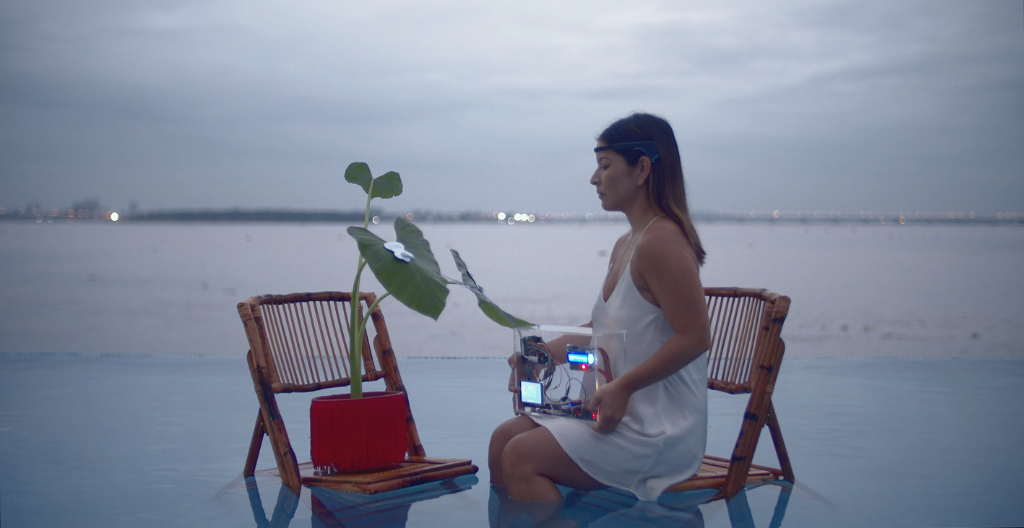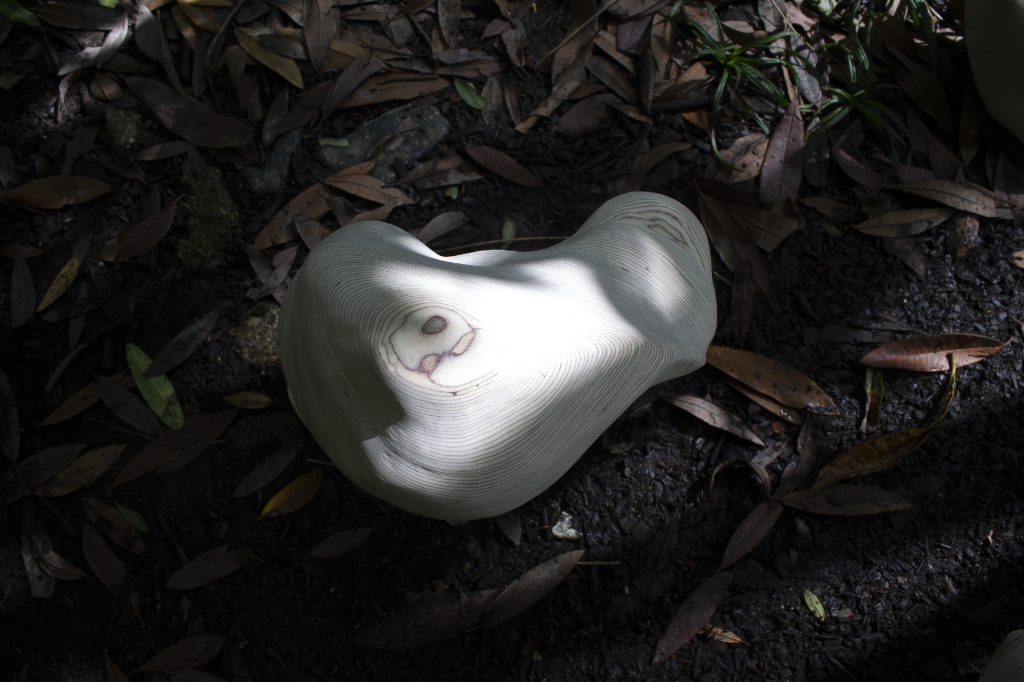Text by Giulia Ottavia Frattini

Dia Munoz is a multidisciplinary Ecuadorian artist based in London focused on the interplay between human behaviours, nature and technology. Her research revolves mainly around the possibilities technology offers to reshape nature, how nature affects us and how we can interact with the invisible forces that govern the universe for a deeper understanding of our present.
Munoz is linked to a holistic comprehension of our reality, and her practice intends to reinforce the awareness that every living being has its consciousness that can be revealed. Therefore, a mutual exchange between humans and all the creatures inhabiting the cosmos is potentially achievable and feasible.
One of her latest projects is entitled NOETIC and stems from the wish to establish a dialogue with nature, more specifically with plants. It came to light during the lockdown isolation period when the artist started to meditate with nature by developing a relationship with the plants in her flat, driven by a keen curiosity about their silent and almost secret life. Unveiling their language is one of the challenges and aims of this work, combining a scientific approach with a delicate touch.
Here are the artist’s words while explaining the starting point that triggered her creative practice: I started to discover the amazing power of plants. How they move, how they think and the way they are designed to overcome anything. It amazed me how they communicate with each other, and the fact that they feel without senses blew my mind. I
started my research and found out they hold a bioplasmic body – an electric field – just like us humans, which they use to communicate with each other through electric responses. In the sense that their bioplasmic body will change if they are stressed, happy, sad or in tune with us humans. I guess in a few words, I just wanted to converse with plants.
Munoz has built a tool named “Bio-Transmographer” to make the interaction with these organisms visible. The device uses a heart monitor, Arduino boards, and displays to record and show any electric response plants have while interrelating with humans and the surroundings.
The machine consists of sensors meant to be placed on the leaves; these generate a bioelectric reaction that can be conceived as unfolding the plant’s voice. The process appears as an interchange between different but not separate worlds, making a human-plant conversation possible.
Such a connection brings to a sentient coexistence of two organic and living spheres and discloses how one influences others through gestures, sounds, and actions. When plants’ first responsive signals were emitted, the artist established real talk sessions with the plants, at first basic and mundane, increasingly structured until they reached the form of therapy and shared meditation.



To provide a sense of concreteness to the outcomes of her project, the artist materialised the data by creating several plywood sculptures and one video performance. The three-dimensional translation can be seen as the tangible version of two frequencies belonging to bodies and energies in dialogue. The result is a physical state in which sensations take shape through poetic objects that visually offer the idea of stratification, suggesting how the layers of time moulded memories and identities of organisms developing on the planet.
The clarification gives further insight into the empathetic character of the work in its title. As Munoz explains: Noetic is the philosophy that studies inner knowledge, what I like to call Intuition. This sense of knowledge is sometimes also called the “deja-vu” sensation. We can’t quite explain where it comes from, but there are some things we know. In the project Noetic, I connected with inner knowledge by conversing and sharing electric fields with plants. […]
The fact that I also saw my electric response through data and the plant’s electric response was mesmerising. This is why I named the project Noetic. Because the whole experience of researching, performing and making with nature activated this inner knowledge we all have. I could bathe with energy from Gaia through different sessions and experiments and record it.
In these current times that see us entangled within scenarios of precariousness and uncertainty, what seems to strike the artist most is the rising of a society increasingly tense to a trans-humanistic approach.
According to her perspective, the climate of crisis has strengthened the awareness that we are all inextricably linked and interdependent: humans, nature and the environment together. NOETIC aspires to showcase this condition through art gently, encouraging the audience to experience the vibrations that bond in unison and harmony with a broader scope of beings in the universe.
As echoed in the artist’s vision, the language of the plants seems to be an appropriate melody to accompany us through this undermining moment. The artistic field can be a fertile ground for the birth of alternative horizons: By creating different projects, we share knowledge and experiments that will broaden our view of our world. [Art] makes you feel present and somehow deal with various topics in a way that you have never thought of. Through art, we are challenged with our perspective and invited to see the world differently. A perspective that doesn’t follow the rules. Art debunks society and cultural knowledge and presents a new proposition of behavioural science within contemporary society.






